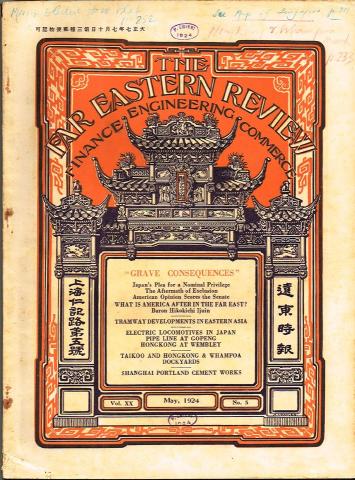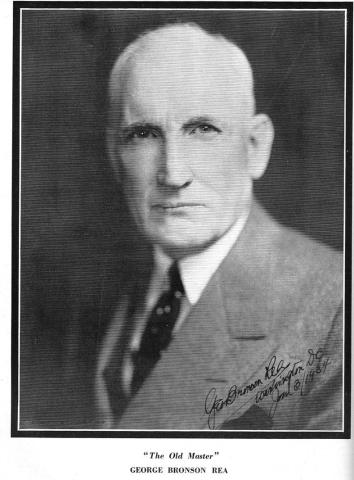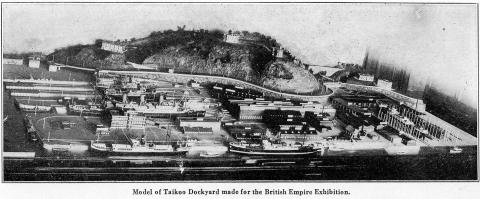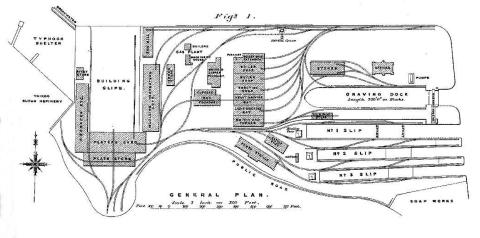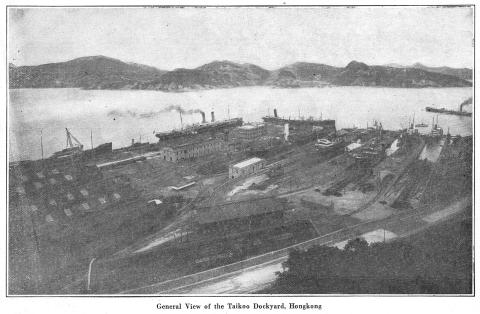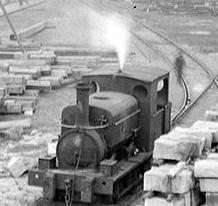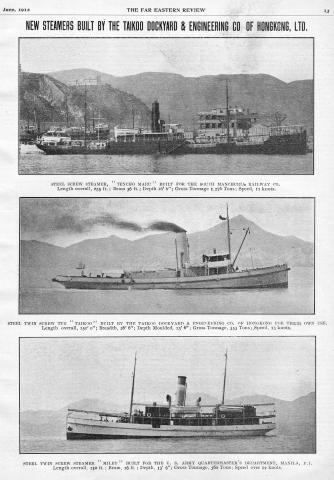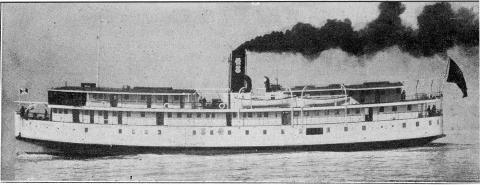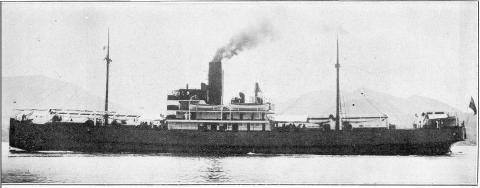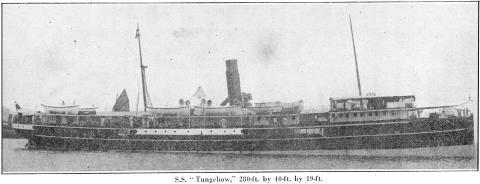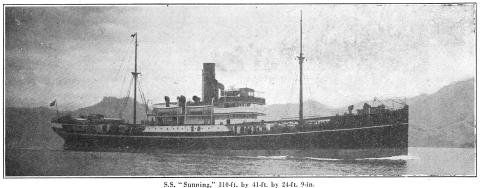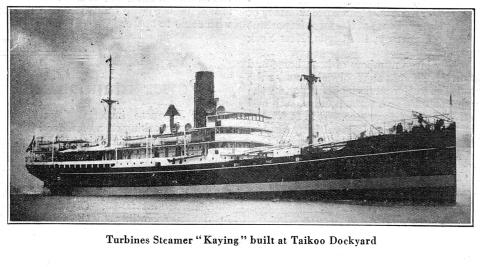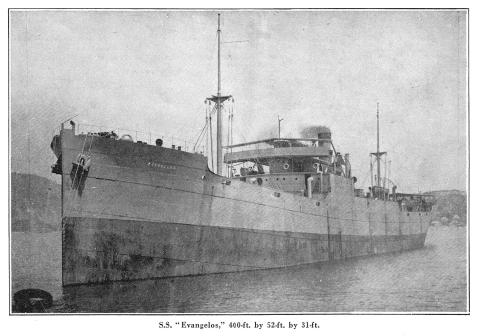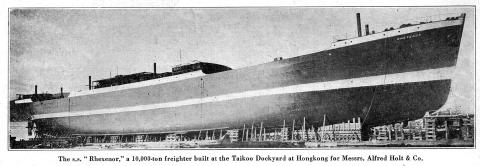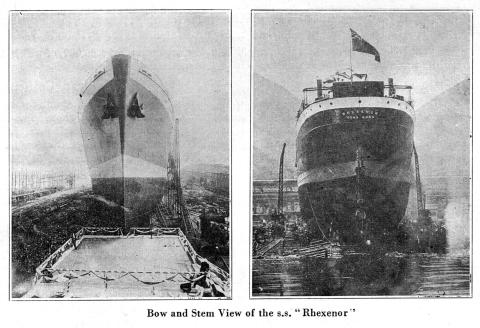"Hongkong's Contribution to the Empire"
“Hongkong’s Contribution to the Empire”..…. So ran a headline in the May 1924 edition of “The Far Eastern Review” (‘FER’), a monthly journal dedicated to the “Industrial Development and Advancement of Trade in Far Eastern Countries. So useful was this journal to the intelligence communities of foreign countries, dozens of copies were shipped off around the globe from Shanghai each month, ensuring that secret services agents such as those sitting at creaking wooden desks in the U.S War Office had plenty of photographs, in-depth descriptions of China & the Far East as well as the chatter then circulating among the political classes of these far-distant lands.
The publisher and editor of this masterpiece was one George Bronson Rea, an American engineer, journalist and later mercenary propagandist. Rea had initiated his project in Manila in 1904 but soon relocated his head office to the International Settlement in Shanghai where it proved much easier to source “information” reliable or otherwise. Geo. Bronson Rea, as he was usually known, in his early days in China was sympathetic to the Chinese cause of resisting the foreign powers carving out their “spheres of influence”. In later years, however, he began to side with Japan’s growing power and finally in a final act of anti-Chinese treachery became an adviser to the Japanese puppet regime of Manchukuo. However, I have digressed…. ...
Returning to the British Empire; the FER described a detailed scale model of the Taikoo Dockyard and Engineering Co.’s premises on Hong Kong island as “one of the most interesting exhibits” at the British Empire exhibition which was held at Wembley Park in England from 23 April 1924 to 31 October 1925. The Taikoo Dockyard, and its competitor, The Hongkong and Whampoa Dock. Co. had together created a large Far Eastern shipbuilding industry in Hong Kong, building ships for the great British Empire, far and wide.
The Taikoo dockyard was built between and 1902 and 1907. Its large, granite-lined dock was 787ft in length, almost 82 ft in width and could accommodate most of the world’s largest commercial and naval ships of the era, having been built to British naval specifications.
You can observe in both the plan and the general view of the dock and shipyard that there was quite an extensive network of railway tracks around their facilities. I have yet to find an historic article describing this railway line so I am attempting to piece together some of the snippets of information I have unearthed and solve what for me is still a fascinating mystery. It was the norm in days of Empire for their Colonial companies to buy almost exclusively from the 'home country'. Taikoo Dock was constructed between 1902 and 1907. Coincidentally between 1901 and 1902, parent company Butterfield and Swire placed an order for two small steam locomotives from the Manning Wardle Company's Boyne Engine Works in Leeds. The two engines of 0-6-0 wheel configuration were "saddle" tank engines, which to non-railway buffs means that the water tank is placed over the top and around the sides of the boiler as if it were a saddle on a horse or donkey. The factory Works Nos. were 1514 and 1578 of 1901 and 1902 respectively. The wheel gauge of the locomotives was 4ft 81/2", known internationally as "standard gauge". Looking at the John Swire & Sons Collection of photographs on the University of Bristol's "Historic Photos of China" website, it appears to my judgment that the gauge of these two engines matches the track width depicted in the photographs. One of the photos in this collection shows a saddle-tank engine on a portion of track adjacent to the large "GRAVING" Dock just near the corner of the "STORES" building (see above plan) .
The next part of my investigation was to discover if any Manning Wardle engines of this type and from the same era have survived. Luckily one has. This is an 0-6-0 saddle tank (Works No. 601 built in 1903) , now named "Matthew Murray" on the Middleton Railway in Leeds , close to where the very site where the engine was constructed over one hundred years ago.
Comparing these two photographs, I am convinced that the locomotive in the Taikoo Dockyard was indeed one of the two Manning Wardle engines imported 1901-02. The engines are virtually identical in design ...... although yes, somebody has removed the buffers and wheel 'guard irons' and replaced these with blocks of wood. So for now, that mystery is put aside until somebody comes back and says .....Hey ! you cannot be right about the railway because ......
Now returning to my main theme of Hong Kong's "Contribution to the Empire" , let’s take a look at a few of the ships built at these dockyards, some of which could each merit their own interesting forum topic with grim tales of piracy, kidnappings, arson, blown onto rocks in typhoons, groundings by negligent drunken skippers and later the target of torpedo attacks or colliding with mines in the 2nd World War.
After completion, Taikoo Dockyard was churning out about six fairly large steamships a year, mostly for Chinese coast and river activities. Shortly before the British Empire Exhibition the dockyard achieved much publicity after completing an overhaul of the Empress of Canada (length 627 ft) in their dock.
Several editions of the FER during the period 1910 - 1920's featured ships which had been built at Taikoo Dockyard as well as the Hongkong and Whampoa Company’s shipyards.
S.S. Nanning was built by Taikoo Dockyard & Engineering Co. in 1923 for the China Navigation Co. She was scuttled at Hong Kong in December 1941 to avoid capture by Japanese forces. However, the ship was refloated, repaired and renamed “Nannin Maru” (Perhaps a mis-spelling for Nanning) . She was sunk again by a mine on the 16th July 1945 off Yawata (northern Kyushu).
The River Steamer “Hang Cheong” was built by Taikoo Dockyard in 1923 for a Macau company, the Yau Tak Steamship Co. and used for river journeys up the Pearl River to Canton. During the war the Japanese renamed this ship “Kaisyu Maru”
The River Steamer “Wenchow II” built by Taikoo Dock in 1923 for use on the Yangtze River. This was presumably a replacement for the China Navigation Co.’s original S.S. “Wenchow” which was broken up in 1922. The first ship of this name was built by Scott & Co. of Greenock in Scotland in 1878.
The S.S. Tungchow, 2,104 tons was built in 1914 and for many years served on the Shanghai - Tientsin ( Tianjin ) route. It became famous worldwide (at least twice) for being the subject of pirate attacks in December 1925 and again in February 1935 ,when 73 foreign children were taken hostage. There is another photo of the Tungchow in an advertisement here.
The S.S Sunning was built at Taikoo Dockyard in 1916. On October 23rd 1923, the ship was attacked by pirates near Hong Kong. The Master James Pringle, the 1st mate and an anti-piracy guard were wounded. $20,000 was seized by the pirates.
On March 14th. 1926. The "Sunning" grounded on Button Island.(which Button Island is not specified in the wreck record).
On November 15th 1926 the ship was attacked again by pirates and set on fire between Amoy and Swatow. It was rescued by H.M.S. Bluebell, and towed to Hong Kong for repairs, resuming service on February 12th.1927.
On August 27th. 1936., while at anchor at Junk Bay, sheltering from a typhoon it was blown ashore and declared a total loss.
S.S. LAERTES, 5,805 tons, was built at Taikoo Dockyard in 1919 to be used as a Dutch cargo steamer. She sank on 3rd May 1942 when on route from New York & Hampton Roads for Table Bay and Bombay carrying a cargo of 5,230 tons war supplies, including 3 aircraft, 17 tanks & 20 trucks. She was torpedoed by German submarine U-109 and sunk. 18 crew were lost from a total of 66.
S.S Kaying built at Taikoo in 1922. She was 321 ft in length and had a beam of 44 ft beam. The ship was ordered by the China navigation Co. for their Bangkok trade. The ship had a single propeller shaft driven by “Brown Curtis” type high and low pressure steam turbines built in-house at the Taikoo Dockyard’s own machine shops. The turbines were driven by steam from a single boiler (fitted for fuel oil) operating at 200lbs psi.
The S.S. Evangelos was launched at the Taikoo Dockyard in1919. After its launch the S.S. Evangelos appears to have been used for shipping cargo around post-war Europe. In 1923 it was purchased from the owner (E. Ambatielos of London) by Glasgow-based T. Dunlop & Co.’s ‘Queen Line’ and renamed “Queen Maud II”. In 1936 it was sold to a Greek company in Paraeus and renamed S.S. “Christos Markettos”. It was torpedoed and sunk by a Japanese submarine in the Indian Ocean in 1942.
Launched on 29th July 1922 at the Taikoo Dockyard, the S.S. “Rhexenor” commissioned for the Blue Funnel Line, was a freighter of about 8000 gross tonnage, being 477.5 ft in length
The launching ceremony was conducted by Comdr. C.W Beckwith who was Hong Kong’s Deputy Harbour Master
The Far Eastern Review describes the vessel in detail. “Under the forecastle has been fitted up for emigrants, while the space under the poop has been utilized for the accommodation of sailors and firemen. Petty officers' rooms are on the bridge deck alongside the engine casing. In the citadel house at the fore end of the bridge deck, the saloon, engineers' rooms and three staterooms have been arranged, and on the deck over the saloon is a steel house containing the captain's day and night cabins, also four rooms for officers. Over this house again is the navigating bridge with wheelhouse and chart room. The vessel is supplied with eighteen steam winches with derricks carrying loads varying from 2 tons to 40 tons. A powerful Marconi wireless apparatus is installed, with suitable rooms for the operators. The machinery consists of one set of Parsons latest turbines driving through double reduction gearing and capable of developing a total shaft horse-power of 6,500. Steam is supplied to the turbines by two large double-ended boilers, one single ended auxiliary boiler is also provided, and all the boilers have a working pressure of 220-lb. Electric light has been fitted throughout the ship. When completed and on service the Rhexenor will attain a speed of 14 knots”.
On the 3rd February 1943 when on route from Durban to the United Kingdom with a cargo of 6,451 tons of cocoa beans she was torpedoed and sunk by German submarine U-217. There is photo of the ‘Rhexenor’ fully completed on this site
Hong Kong bade farewell to Taikoo Dockyard in the 1970's to spurn the huge Taikoo Shing housing development.
You can read several more tales about the history of Taikoo Dockyard and other dockyards on the excellent website hosted by The Industrial History of Hong Kong Group .
